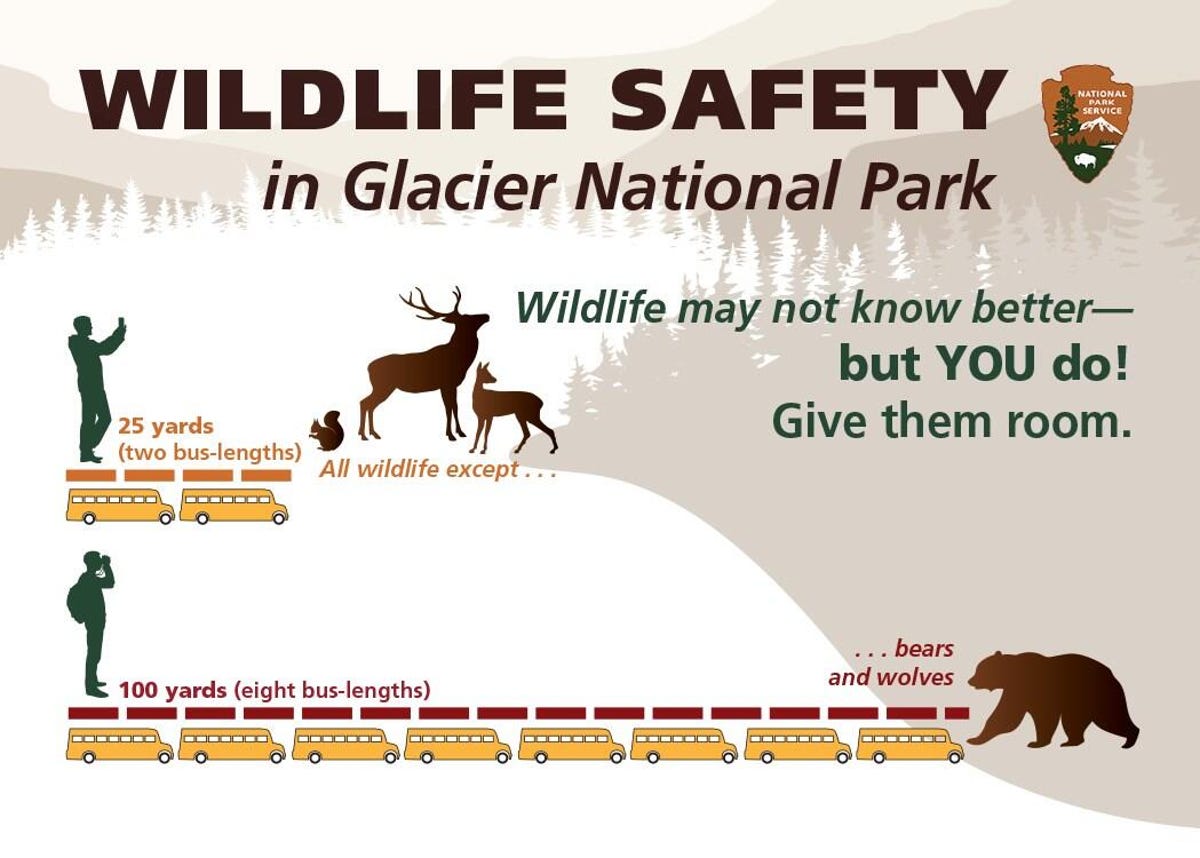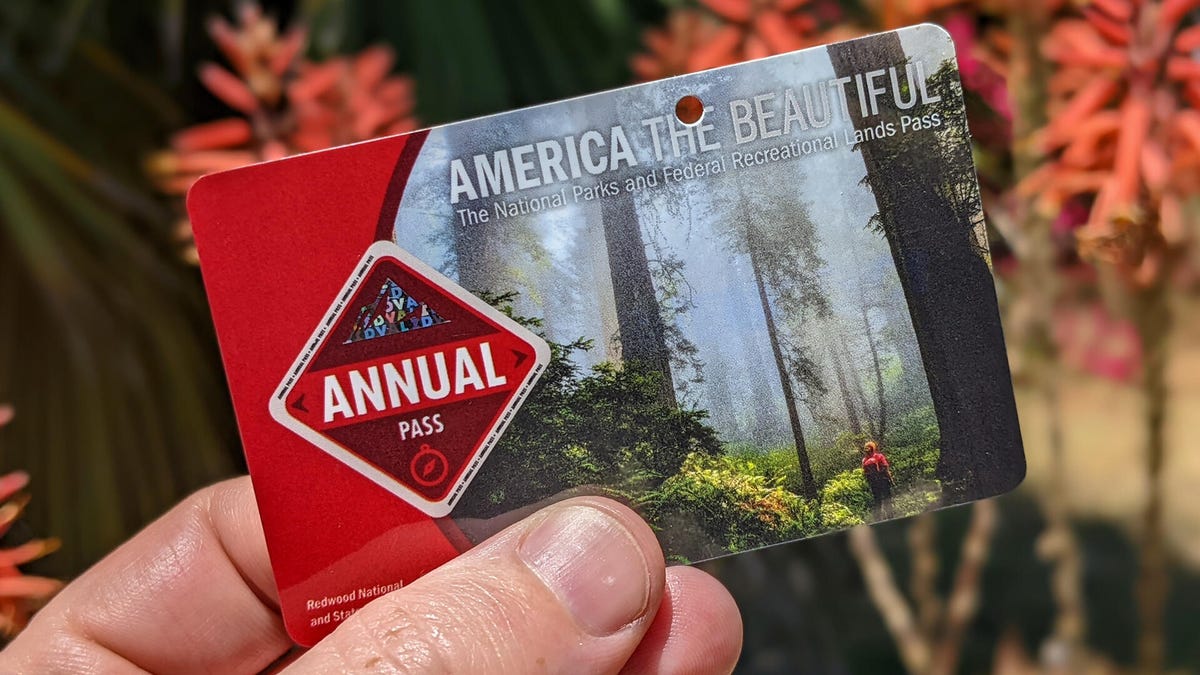10 tips for visiting a national park this summer 10 tips for visiting animal kingdom 10 tips for visiting arches 10 tips for visiting america 10 tips for visiting all inclusive resorts 10 tips for public speaking 10 tips for healthy lifestyle 10 tips to stay healthy 10 tips for successful interview 10 tips for first time home buyers pubg emulator matching problem 10 tips

10 Tips for Visiting a National Park This Summer
I recently finished a 5-week, 9,900 mile road trip where I visited 9 National Parks. Last year, I did a 10,000 mile road trip and visited four others. All told, I've been to 23 out of the 63 National Parks in the United States. I hope you're planning on seeing at least one this summer, because they're all amazing.
Below are a few tips I'd give to those headed to a park (or parks!) this summer. It's also worth checking each park's respective website. Every park has one and they're filled with maps, things to do and see, and most importantly, if there are any road closures or other important info.
1. Prepare yourself for crowds
National Parks are extremely popular, and for good reason. They're amazing! As a destination, or stop on a longer road trip, lots of people want to visit. This is especially true of the larger, more popular parks, like Yellowstone, but even many more remote parks, like Glacier. Parking inside the park will be challenging. Even getting into the park might take time. The last park on my trip was Sequoia, and there was a half hour line just to enter the park.
This shouldn't dissuade you from going, but if you have smaller, less visited parks on your list, you might have a better or more relaxing time at those.
There will be more traffic in the park as well, so if you think "we can see it all in a day" chances are you won't be able to.
2. Stop at the visitor's center

Sometimes some of the parks have a little bit of snow... even in early summer. The end of June at Crater Lake NP's Rim Village Visitor Center in this case.
Geoffrey Morrison/CNETWhether you're the type of person that plans every moment of every adventure, or not, the first place to stop is the visitor's center. You'll get a map and the park's newspaper at the entrance, but one of the rangers at the visitor's center can help you figure out a plan for the day, based on what's open, how much time you have, and any other considerations. They're fantastic. This is absolutely worth the time.
3. Park in the first space you see
This ties in with the first tip. Parking lots fill fast, but in many cases the roads leading there support roadside parking. If you see a long line of cars parked on the shoulder, definitely assume there will be a wait for parking in the official lot. If the road signs say it's ok, park as soon as you see an opening. You'll spend significantly less time walking from that spot than you will waiting for someone to free up a better space.
4. The wildlife can kill you

If you want a photo like this, get a telephoto lens for your camera, use the telephoto camera on your phone, or a telephoto adapter for your phone. Don't approach the wildlife. I was in my car, stopped, because this herd was crossing the road.
Geoffrey MorrisonEvery few weeks there are stories of people getting injured, or even killed, by wild animals at National Parks. Even during my trip this summer I saw multiple people at different parks get way too close to various large animals. A bison won't eat you, but it will easily mess you up. Same goes for elk. Bears… well, black bears are scared of you. Grizzly bears are most decidedly not.

This graphic is for Glacier, but the advice is sound for most parks. Check for local info, though, at ranger stations and visitor centers.
NPSThe problem, I think, is two-fold. One, I think some people just don't realize how fast animals can be. It doesn't matter if they don't have sharp teeth, if they hit you at 40mph and then kick you, you're going to be in a bad way. The other is that most phones have wide-angle lenses. So people want a cool photo (no judgment, me too), but can't because of the limitations of their phone. So they do the "logical" thing and move closer.

A handy guide on where to pet wild bison.
NPSTwo easy fixes here. One, get a telephoto lens for your camera, or a telephoto attachment for your phone's camera. Two, stay back: 25 yards from animals like bison and elk, 100 from things that will eat you, like bears. Ideally, keep something between you and the fuzzy friend, like a car. Or the best option, don't get out of your car if they're near the road.
5. Don't expect cell reception

You can see a million miles tonight, but you can't get very far. From my Instagram.
Geoff Morrison/CNETCell coverage in National Parks, even the popular ones, is sparse. Some ranger stations and visitor centers have free Wi-Fi, but not all.
Which is to say, download maps and hiking info before you enter the park. This is easy with Google Maps. Hiking apps like AllTrails allow for offline viewing as well, if you pay for the premium version.
6. Bring your own food and water
Some parks have small cafes or even full cafeterias. Many don't. Definitely advisable to bring your own food and water. Especially the latter.
If you're camping in the park, make sure you check with the rangers about how aggressive the local wildlife is. Many parks require all food to be put in bear-proof containers. These will either be heavy metal cabinets at the campsite, or portable versions available at the visitor's center. Bears absolutely do love pic-a-nic baskets. See #4 for why this is important.
7. Get the year pass

The vast majority of Americans are within a few hours drive of a National Park. Not just any National Park, but the best National Park: the one closest to you. Sappy as that is, it's true. They're all cool. Some are cooler than others, for sure, but there's a reason they made it through the process of becoming designated a National Park.
So for most people, the Annual Pass makes a ton of sense. This is also called the America the Beautiful or Interagency Pass. Each visit to most parks is ~$30 per vehicle but the year pass that gets you into all parks for 1 year for $80. That math is easy to figure out. You can buy them at the park entrance or online at the USGS store or REI. They also get you entrance into 2,000 federally-protected lands like National Forests and wildlife preserves. There are also lifetime senior passes, and several other varieties.
That said, some parks don't charge an entrance fee, or don't charge for accessing certain areas of the park. It's worth checking ahead of time.
8. Plan additional activities for kids
From my (admittedly distant and anecdotal) experience with the small humans I was near at the parks, they all seemed to be having a fantastic time. If you want to give them something else to do while you're all enjoying the parks, consider National Park passports, journals, and activity books.
9. Stay near the park, not in it

Camping in Great Sand Dunes National Park during last year's 10,000-mile road trip.
Geoff Morrison/CNETIf you haven't booked a campsite or lodge inside a park by now, you're probably not going to get a spot. Some parks also have first-come-first-serve campsites, but don't count on getting one of those either (see #1). While staying in the park is undeniably cool, it's not required. Most parks have a nearby town or towns that exist pretty much entirely to service visitors to the park. For instance, on my trip this summer I stayed in Jackson for Grand Teton, West Yellowstone for, you guessed it, Yellowstone, West Glacier for -- wait for it -- Glacier, and so on.
10. Leave with everything you brought

A bear warning at Great Sand Dunes NP.
Geoffrey MorrisonThis includes wrappers, food, water bottles, annoying children, everything. In select places there are wildlife-proof trash containers. Definitely use them. Apparently some people felt it was ok to leave bags of their dog's poop and trust me, this is not OK.
Related, it's worth reading up on whether your chosen park allows dogs, and if so, to what extent. Many don't want them on hikes, don't want them on certain trails, but all require them to be leashed at all times.
Most of all, I hope you have a grand adventure!
As well as covering TV and other display tech, Geoff does photo tours of cool museums and locations around the world, including nuclear submarines, massive aircraft carriers, medieval castles, epic 10,000 mile road trips, and more. Check out Tech Treks for all his tours and adventures.
He wrote a bestselling sci-fi novel about city-size submarines, along with a sequel. You can follow his adventures on Instagram and his YouTube channel.
Source
Blog Archive
-
▼
2023
(69)
-
▼
February
(22)
- Snag A 2nd-Gen Lenovo Smart Clock For 33% Off Toda...
- Lenovo Announced Its Thinnest Ever ThinkPad 2-in-1...
- 'Halo' TV Show On Paramount Plus An Ultra-Violent ...
- Mortgage Underwriting: How Long It Takes And Every...
- Stellantis And Samsung SDI Will Build EV Batteries...
- 10 Tips For Visiting A National Park This Summer
- Meet Moog's Music Machines, Made In America
- Microsoft Surface Laptop 4 15-inch Review: Far Fro...
- Kids Play With Gadgets More Than Toys, Study Says
- Asus DB51 Review: Asus DB51
- Wordle + Name That Tune = Heardle
- How To Send Cash With Snapchat
- Netflix Explains 'The Sandman's' 'Distracting' Asp...
- Upgrade To Apple's Latest 10.2-Inch IPad And Save ...
- Meet The New Dune Buggy And Imagine You're Steve M...
- Streaming Services To Cancel Or Keep In September ...
- Nvidia Fined Over Cryptomining Disclosures. This W...
- Make Iced Coffee At Home With This Simple Recipe
- Home Sales Fell Through At A Stunning Rate In June
- Acer Unveils Low-cost Windows 10 Cloudbooks As Riv...
- Huawei Lets Us Glimpse Mate 30's Power With 5G Kir...
- Facebook Adds Tools To Combat Misinformation In Gr...
-
▼
February
(22)
Total Pageviews
Search This Blog
Popular Posts
-
Resepi ayam goreng celup tepung bestari original, resepi ayam goreng celup tepung bestari kecil, resepi ayam goreng celup tepung bestari kot...
-
Underwriting for mortgage takes how long how long underwriting takes how long is underwriting for home loan how long for underwriting mortga...
-
Halo tv show paramount plus release paramount halo tv series halo paramount show episodes halo series paramount plus halo tv show on paramou...
